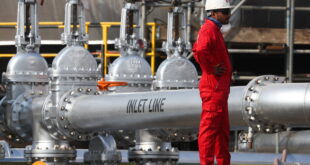OPEC members and Russia are expected to stick to the output cut agreement to balance oil markets. despite pressure from US President Donald Trump demanding that oil prices be kept low. analysts said.
In late 2018. OPEC (Organization of the Petroleum Exporting Countries). Russia. and several other non-OPEC oil producers agreed to cut crude oil production by 1.2 million barrels per day (mbd) from October production levels for six months. starting in January.
“Saudi Arabia. Kuwait and UAE will likely stick to the proposed cuts to drain excess capacity from 2H [second half] 2018 and maintain a price floor in 2019.“ Benjamin Lu. commodities analyst at Singapore based Phillip Futures told Gulf News.
Saudi Arabia’s Energy Minister Khalid Al Falih also indicated that he is in favor of extending oil production cuts in the second half of 2019 despite pressure from Trump on lower oil prices.
In a tweet last week. Trump asked OPEC countries to “relax and take it easy“ as oil prices are getting too high and world cannot take a price hike.
“Oil prices though exhibiting for increasing signals of a bearish correction. will remain supported in lieu of tighter market fundamentals for Q1 2019.“ Lu added.
Global benchmark Brent was trading at $65.07 (Dh238.9) per barrel. down by 1.87 per cent when markets closed on Friday. West Texas Intermediate was at $56 per barrel.
According to Washington based Institute of International Finance (IIF) Brent oil prices will average $65 per barrel in 2019 and $60 in 2020.
“We expect Brent oil prices to average $65 per barrel in 2019 and $60 in 2020 based on strong compliance by Saudi Arabia. the UAE. and Kuwait. and weaker compliance by Iraq and Russia. However. the range of uncertainty over the price of oil in the short term remains large.“ said Garbis Iradian. chief economist. Mena at IIF.
In the short term. upside risks to oil prices include larger-than-assumed cuts in Iranian and Venezuelan crude oil exports in the context of US sanctions and emerging infrastructure constraints. including pipeline limitations and other logistical challenges. which could slow the projected growth in US oil production in 2019.
“On the downside. we see the possibility of a surge in supply in the second half of 2019 and 2020. driven by a rapid increase in US output and the possibility that the current production cuts by OPEC and its allies are not renewed.“ he said.
The shale revolution has made the US the world’s top oil producer and is reshaping the global oil market. Prior to the price drop in 2014. US producers required 1600 rigs to produce about 9 million barrels per day. while they can produce even higher levels today with just over half the rigs.
“Various estimates place the production-weighted breakeven price in the range of $45-$55 per barrel across the shale industry. with major fields falling on either side of that average.“ Iradian said.
 Iran Energy News Oil, Gas, Petrochemical and Energy Field Specialized Channel
Iran Energy News Oil, Gas, Petrochemical and Energy Field Specialized Channel




